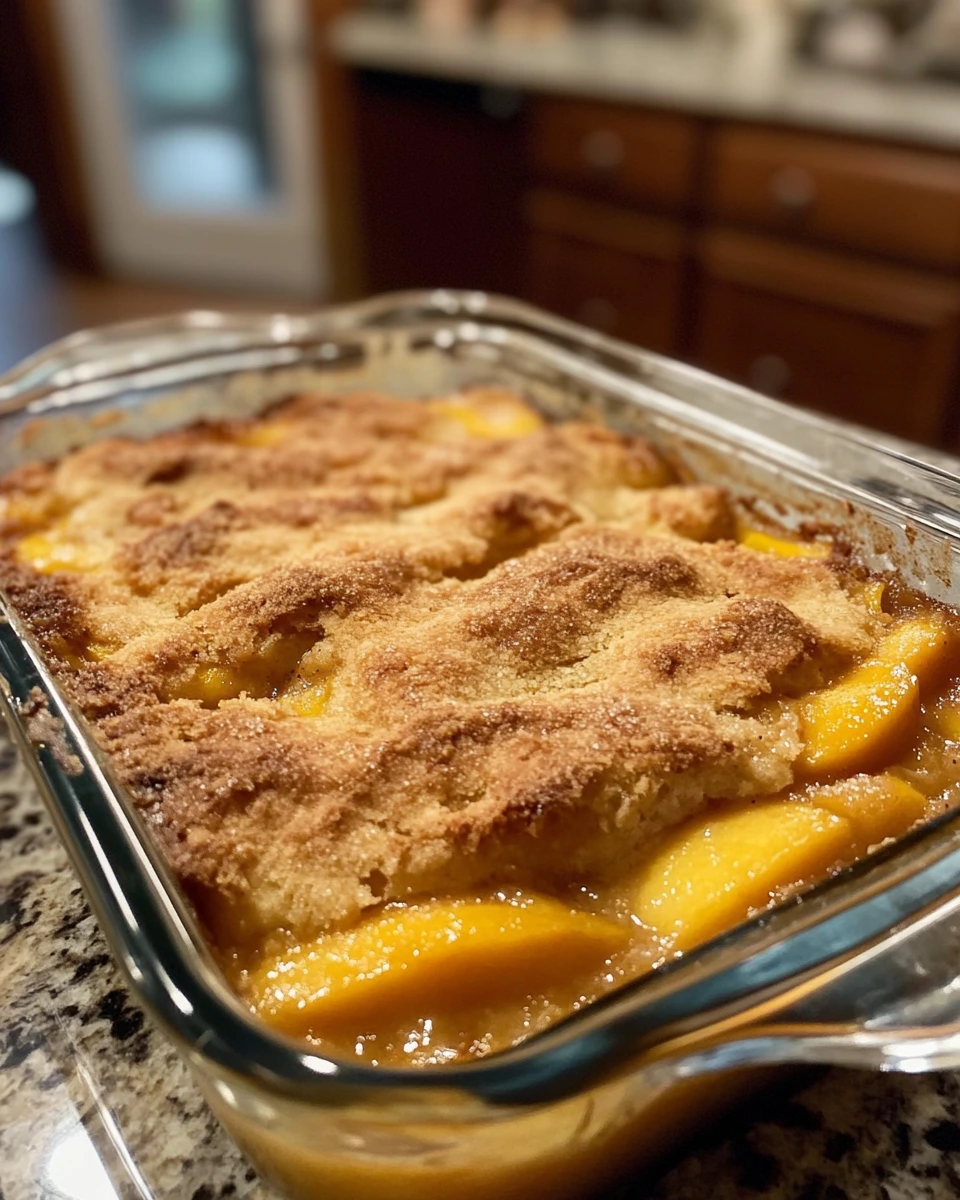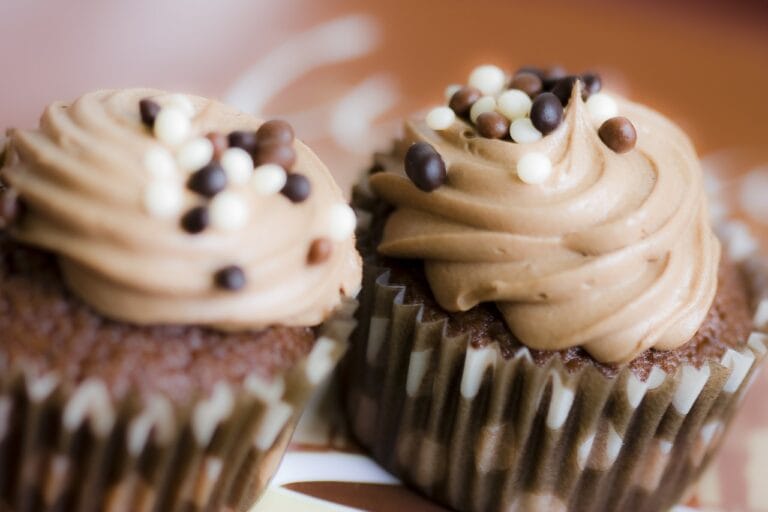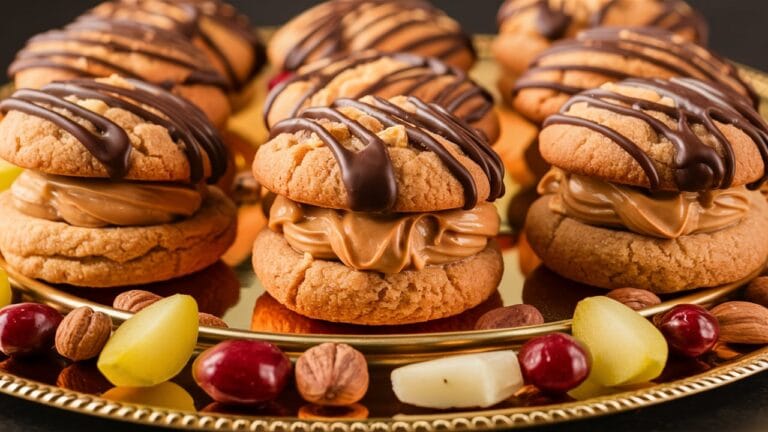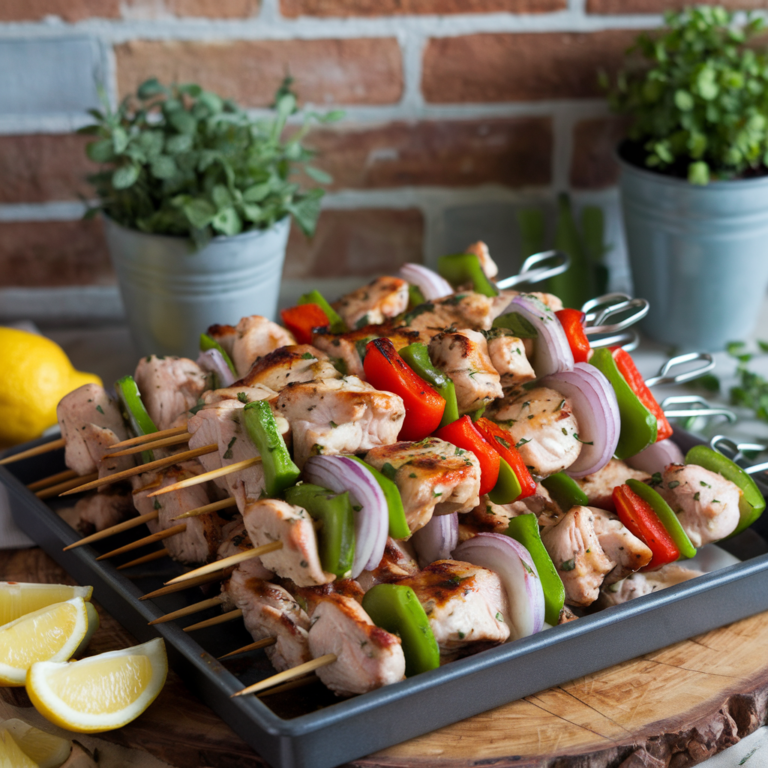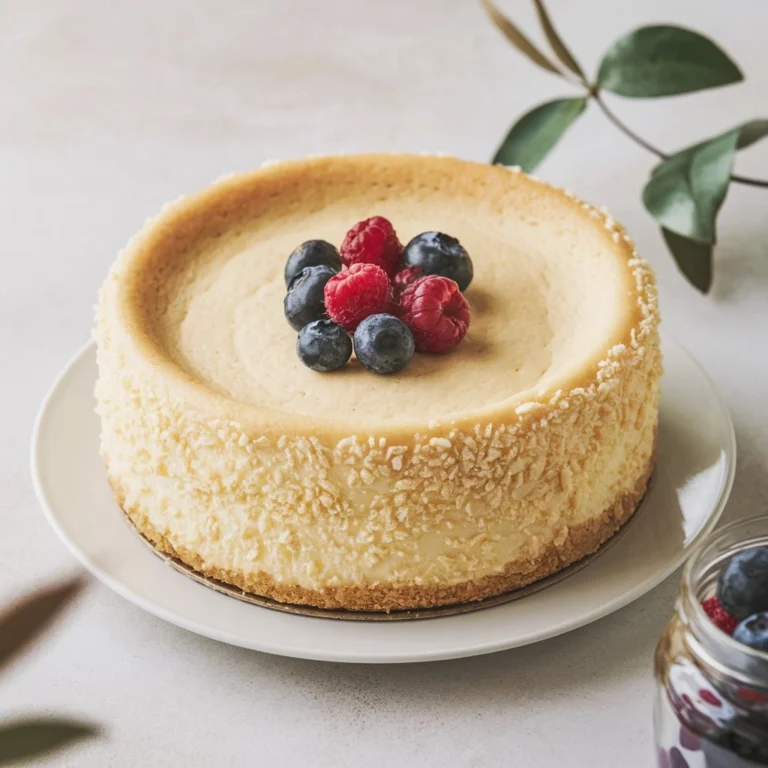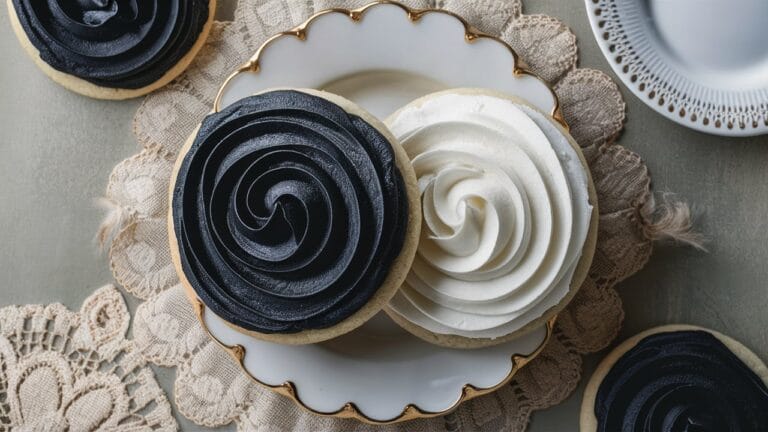What is cobbler topping made of?
Cobbler is one of the most beloved desserts across the world, especially in Western and Southern cultures. Known for its sweet, fruity filling topped with a rich, fluffy crust, cobbler can be customized with a variety of fruits and toppings. The topping is what sets cobbler apart from other similar desserts like crisps and pies. But what exactly is cobbler topping made of?
In this comprehensive guide, we’ll explore everything you need to know about cobbler toppings, from traditional ingredients to creative variations. We’ll look at its history, dive deep into the different types of toppings, discuss regional adaptations, and provide a complete guide to making the perfect cobbler every time.
Table of Contents
- History of Cobbler and Its Toppings
- Traditional Cobbler Topping Ingredients
- Biscuit-Style Topping
- Cake-Style Topping
- Crisp and Crumble Toppings
- Regional Variations of Cobbler Topping
- Southern-Style
- British Cobblers
- American Frontier Cobblers
- Customizing Cobbler Toppings
- Sweetness Levels
- Adding Texture with Oats, Nuts, and Seeds
- Spices and Flavorings
- Vegan and Gluten-Free Options
- Step-by-Step Guide to Making Cobbler Topping
- Troubleshooting Common Cobbler Topping Issues
- Soggy Topping
- Topping Doesn’t Rise
- Topping Too Dry
- Healthier Alternatives for Cobbler Topping
- Frequently Asked Questions (FAQs)
- Conclusion
1. History of Cobbler and Its Toppings
Cobbler has deep roots in American history, with origins that date back to the British settlers who came to America in the 17th and 18th centuries. These early colonists brought their traditional dessert recipes, but found that certain ingredients were difficult to source. Without access to proper ovens or the pastry ingredients needed to make pies, they improvised by layering fruit in Dutch ovens or cast iron skillets and topping them with simple dough or batter mixtures, which resulted in what we now call cobbler.
Origins of the Name “Cobbler”
The term “cobbler” is thought to come from the word “cobble,” as the top crust is usually placed in a rough, uneven manner over the fruit, resembling cobblestones. However, unlike pies or crisps, the dough used in cobblers is generally thicker and more biscuit-like.
Evolution of Cobbler Topping
Over time, cobbler toppings evolved to include different styles based on region and available ingredients. For example, biscuit-style cobbler is commonly seen in the Southern United States, while some British cobblers use a scone-like topping. As cobbler spread across America, various fruits and techniques were used, making it a versatile dessert that could be enjoyed in any season.
2. Traditional Cobbler Topping Ingredients
Biscuit-Style Topping
The most traditional cobbler topping is a biscuit-style dough. This topping is made with simple ingredients like flour, sugar, baking powder, salt, butter, and a liquid such as milk or buttermilk. The dough is prepared similarly to biscuits, often dropped in dollops on top of the fruit filling, leaving some gaps for steam to escape.
Key Ingredients:
- Flour: All-purpose flour is the base of the dough.
- Sugar: Granulated sugar is typically used to sweeten the topping.
- Baking Powder: This is crucial for the dough’s rise and fluffiness.
- Butter: Cold butter is cut into the dry ingredients to create a tender, flaky topping.
- Milk or Buttermilk: Acts as the liquid binder to bring the dough together.
Preparation:
- In a bowl, mix the dry ingredients (flour, sugar, baking powder, and salt).
- Cut cold butter into the mixture until it resembles coarse crumbs.
- Add the milk or buttermilk and stir until just combined to avoid overmixing.
- Drop the dough over the fruit filling and bake until golden.
This topping creates a delicious contrast with the soft, juicy fruit below, offering a light, fluffy texture with a slightly crisp top.
Cake-Style Topping
A cake-style topping is a softer alternative to the biscuit topping. Rather than forming a dough, the ingredients are mixed into a batter that is poured over the fruit filling. This results in a dessert that’s closer to a cake, with a spongy, light texture that absorbs some of the fruit’s juices during baking.
Key Ingredients:
- Flour: The base for the batter.
- Sugar: Provides sweetness and helps the top caramelize.
- Eggs: Adds structure and a rich, moist texture.
- Butter: For flavor and moisture.
- Milk: To help the batter achieve the right consistency.
Preparation:
- Combine the dry ingredients (flour, sugar, baking powder) in a bowl.
- In a separate bowl, whisk together eggs, melted butter, and milk.
- Mix the wet and dry ingredients to form a batter.
- Pour the batter over the fruit and bake until the top is golden and set.
A cake-style topping is ideal for sweeter fruits like peaches or cherries and creates a rich, decadent dessert that absorbs the fruity juices as it bakes.
Crisp and Crumble Toppings
Though not technically cobbler, some variations of cobblers use a crisp or crumble topping instead of dough or batter. These toppings generally include ingredients like oats, brown sugar, butter, and nuts, creating a crunchy texture that contrasts with the tender fruit filling.
Key Ingredients:
- Oats: For a chewy, crunchy texture.
- Brown Sugar: Adds sweetness and a caramel-like flavor when baked.
- Butter: Provides richness and helps bind the ingredients together.
- Nuts: Chopped pecans or almonds can be added for extra crunch.
Preparation:
- Mix oats, flour, brown sugar, and any desired spices in a bowl.
- Cut cold butter into the mixture until it resembles coarse crumbs.
- Add chopped nuts if desired.
- Sprinkle the topping over the fruit filling and bake until crisp and golden.
This topping is particularly well-suited for cobblers made with tart fruits like rhubarb or blackberries because the sweetness of the topping complements the tartness of the filling.
3. Regional Variations of Cobbler Topping
Cobbler recipes vary widely depending on the region, each offering unique flavors and techniques for the topping.
Southern-Style Cobbler
In the Southern United States, cobbler is a staple dessert, often enjoyed during summer gatherings or family dinners. Southern cobblers are typically made with biscuit-style dough, and the topping is sometimes enriched with extra butter or sugar for a richer, fluffier texture. This style is particularly popular with peaches, blackberries, and blueberries.
Southern cobbler is known for its thick topping, which is often spooned on in large dollops, giving it an uneven, rustic look. The dough puffs up as it bakes, creating a soft, slightly chewy texture that complements the juicy fruit filling.
British Cobblers
In the UK, cobbler is made with a topping that resembles scones more than biscuits. The dough is rolled out and cut into rounds, which are placed over the fruit filling in a neat pattern. The result is a denser, more structured topping that can be slightly dry, depending on the recipe.
British cobblers are often less sweet than their American counterparts and are typically made with fruits like apples, plums, or rhubarb. In some versions, the topping is brushed with milk or egg wash to give it a golden, shiny appearance.
American Frontier Cobbler Topping
During the westward expansion of the United States, frontier cobblers became popular due to their simplicity and ability to be made with limited ingredients. These cobblers were often baked in cast iron Dutch ovens over an open fire. The toppings were made with whatever ingredients were available, often flour, water, and a bit of fat, resulting in a rougher, denser topping than modern cobblers.
This rustic version of cobbler is still enjoyed today, especially by campers and outdoor enthusiasts. The topping is usually thick and hearty, making it perfect for withstanding longer cooking times over an open flame.
4. Customizing Cobbler Toppings
One of the best things about cobbler is its versatility. You can customize the topping to suit your tastes, the fruit you’re using, or dietary preferences.
Adjusting Sweetness Levels
The amount of sugar in the topping can be easily adjusted depending on the type of fruit you’re using. For fruits that are already sweet, like peaches, plums, or strawberries, you might want to reduce the sugar. On the other hand, if you’re using tart fruits like rhubarb or cranberries, you can increase the sugar to balance the sourness.
When reducing sugar, keep in mind that it also plays a role in the caramelization and texture of the topping. Less sugar may result in a topping that’s less golden and crispy.
Adding Texture: Oats, Nuts, and Seeds
If you want to add some crunch to your cobbler topping, try incorporating oats, nuts, or seeds. This can give your cobbler a heartier texture and add a layer of complexity to each bite.
- Oats: Rolled oats or quick oats can be added to biscuit or cake-style toppings to give them a chewy, crunchy texture.
- Nuts: Chopped nuts like pecans, walnuts, or almonds add richness and crunch. They’re especially good in fall cobblers with apples or pears.
- Seeds: Chia seeds or flaxseeds can add a subtle crunch while also boosting the nutritional content of your cobbler.
Adding these ingredients is particularly useful when making cobblers with soft fruits like berries, which can benefit from the textural contrast.
Spices and Flavorings
Adding spices and flavorings to your cobbler topping can elevate the dessert from simple to extraordinary. Here are some common spices and their best pairings:
- Cinnamon: Works well with apples, pears, and peaches.
- Nutmeg: Adds warmth and depth to berry or plum cobblers.
- Cardamom: Pairs beautifully with peaches and apricots for a more exotic flavor.
- Vanilla Extract: Adds a rich, sweet aroma to the topping.
- Citrus Zest: Lemon or orange zest can brighten up the flavor of any cobbler, especially those made with berries or stone fruits.
These spices can be added directly to the dough or batter, or sprinkled over the fruit before baking for a more intense flavor.
Vegan and Gluten-Free Options For Cobbler Topping
Cobbler toppings can be easily adapted to fit vegan or gluten-free diets. Here are a few simple swaps you can make:
Vegan Toppings:
- Butter Substitute: Use vegan butter or coconut oil in place of butter.
- Milk Substitute: Swap regular milk for almond milk, coconut milk, or oat milk.
- Egg Substitute: In cake-style cobblers, use flax eggs (1 tablespoon of ground flaxseed mixed with 3 tablespoons of water) or commercial egg replacements.
Gluten-Free Toppings:
- Flour Substitute: Use gluten-free all-purpose flour or a blend of almond flour and coconut flour.
- Oats: Make sure to use certified gluten-free oats in crisp or crumble toppings.
These substitutions won’t sacrifice flavor or texture, so your cobbler will still turn out delicious, whether you’re making a vegan version or a gluten-free one.
5. Step-by-Step Guide to Making Cobbler Topping
Now that we’ve explored the different types of cobbler toppings, it’s time to walk through the process of making a traditional biscuit-style cobbler topping from scratch.
Ingredients:
- 1 cup all-purpose flour
- 1/4 cup granulated sugar
- 1 tablespoon baking powder
- 1/4 teaspoon salt
- 1/4 cup cold butter, cut into small cubes
- 1/2 cup milk or buttermilk
Instructions:
- Preheat the oven: Set your oven to 350°F (175°C).
- Mix the dry ingredients: In a large bowl, whisk together the flour, sugar, baking powder, and salt.
- Cut in the butter: Add the cold butter to the dry ingredients. Using a pastry cutter or your fingers, cut the butter into the mixture until it resembles coarse crumbs.
- Add the milk: Pour the milk into the dry mixture and stir until just combined. Be careful not to overmix, as this can make the dough tough.
- Assemble the cobbler: Pour your fruit filling into a baking dish, then drop spoonfuls of the dough on top of the fruit.
- Bake: Bake the cobbler in the preheated oven for 30-40 minutes, or until the topping is golden brown and the fruit is bubbling.
This simple recipe can be adapted to suit your preferences, whether you want to add spices, switch out the type of milk, or experiment with different flours.
6. Troubleshooting Common Cobbler Topping Issues
Even though cobbler is a fairly simple dessert, a few things can go wrong during the baking process. Here are some common cobbler topping problems and how to fix them.
Soggy Topping
If your cobbler topping comes out soggy, it could be due to one of two things:
- Too much liquid in the filling: Some fruits release a lot of liquid when baked, which can cause the topping to become soggy. To prevent this, toss your fruit with a bit of cornstarch or flour before adding the topping.
- Undercooked topping: If the fruit filling is done but the topping is still soft, cover the cobbler with foil and continue baking until the topping is fully cooked.
Topping Doesn’t Rise
A flat, dense topping can be disappointing, but there are a few reasons this might happen:
- Expired baking powder: Make sure your baking powder is fresh and active. Expired baking powder won’t give the topping the rise it needs.
- Overmixing the dough: Stirring the dough too much can develop the gluten in the flour, resulting in a tough, dense topping. Mix the dough just until the ingredients are combined.
Topping Too Dry
If your cobbler topping turns out dry or crumbly, it could be due to:
- Overbaking: If the cobbler is left in the oven for too long, the topping can dry out. Check your cobbler regularly after 30 minutes of baking to ensure it doesn’t overcook.
- Not enough liquid: Adding too little milk or buttermilk can make the dough too dry. If your dough looks too crumbly, add a tablespoon of liquid at a time until it reaches the right consistency.
7. Healthier Alternatives for Cobbler Topping
Cobbler is a delicious dessert, but if you’re looking to make it a bit healthier, there are plenty of ways to do so without sacrificing flavor.
Whole Grain Toppings
One of the easiest ways to make cobbler healthier is by using whole grain flour in place of regular all-purpose flour. Whole wheat flour, spelt flour, or oat flour can all add fiber and nutrients to the topping while still producing a delicious result.
Reducing Sugar
You can also reduce the amount of sugar in the topping, especially if you’re using sweet fruits like peaches or berries. Consider using natural sweeteners like honey, maple syrup, or coconut sugar to add a more complex flavor while cutting back on refined sugars.
Low-Fat Options
If you’re looking to reduce the fat content in your cobbler topping, try using a plant-based butter or a smaller amount of regular butter. You can also replace some of the butter with applesauce or Greek yogurt for a lighter, healthier option.
8. Frequently Asked Questions (FAQs)
Here are some common questions people have about cobbler toppings:
What is cobbler topping made of?
Cobbler topping is typically made from flour, sugar, baking powder, butter, and milk or buttermilk. Variations may include oats, nuts, or spices for added flavor and texture.
Can you make cobbler topping without butter?
Yes, you can use margarine, shortening, or plant-based butter as a substitute for butter in cobbler topping.
What’s the difference between a cobbler and a crisp?
Cobblers have a thick, dough-like topping made from biscuit or cake batter, while crisps have a crunchy topping made from oats, flour, sugar, and butter.
Is cobbler topping supposed to be crispy or soft?
Cobbler topping can range from soft and fluffy (in biscuit or cake-style cobblers) to slightly crispy on top, depending on the recipe and baking time.
How do I make cobbler topping gluten-free?
To make cobbler topping gluten-free, you can use gluten-free all-purpose flour or a combination of almond flour and coconut flour.
9. Conclusion
Cobbler is a timeless dessert with a topping that can be customized in countless ways. Whether you prefer a classic biscuit-style topping, a soft cake-style layer, or a crunchy crisp topping, the possibilities are endless. By understanding the basic ingredients and techniques involved, you can experiment with flavors, textures, and dietary preferences to create the perfect cobbler for any occasion.
With a little practice and creativity, you’ll be able to make a cobbler that is both delicious and unique, whether you’re baking it for a family dinner or a special gathering. So go ahead, grab your favorite fruits, whip up a batch of cobbler topping, and enjoy one of the most comforting desserts out there.

